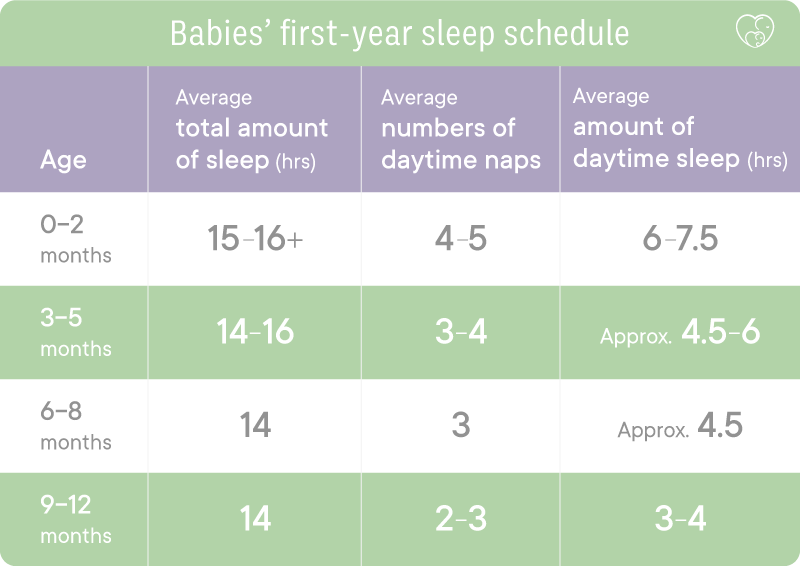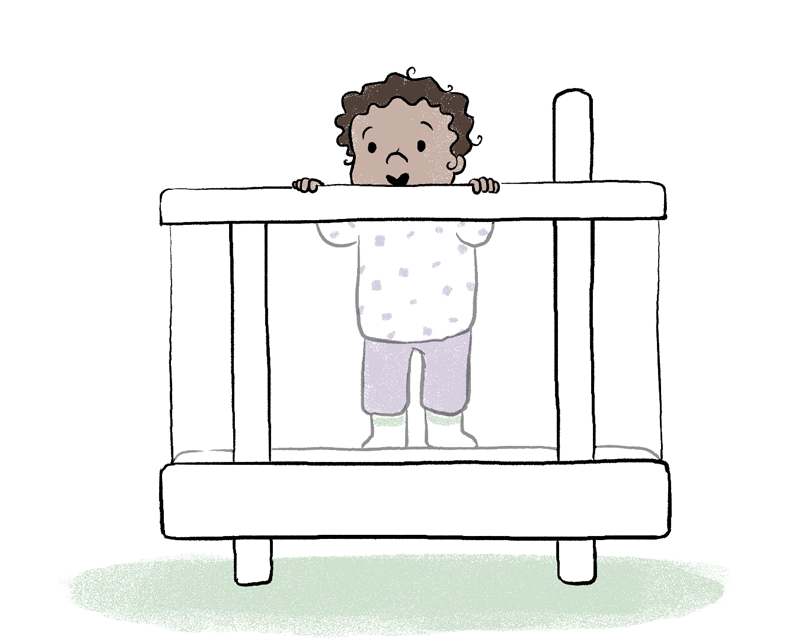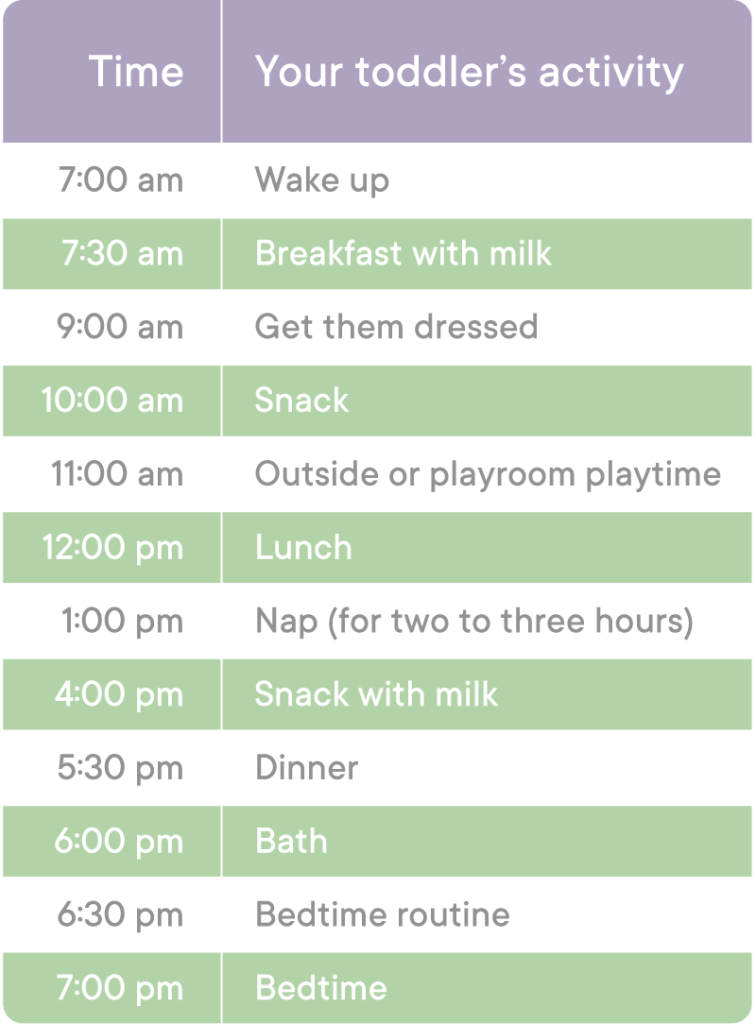Science of baby sleep
0 min read
When do babies drop to one nap? 6 signs your baby is ready

Medically Reviewed Dr. Nilong Vyas(MBBS, MD)
Written by Cradlewise Staff
Naps are precious for your baby. They also mean a little downtime for you. For the first few months of life, your little one will sleep in many short spurts throughout the day.
However, as they grow older, these multiple daytime snoozes start dropping in number. Your baby’s sleep needs will change as they grow and develop. And then they eventually hit a significant milestone in their sleep schedule—dropping to one nap a day.
When toddlers drop to one nap, it can be a slow process that requires some planning. But don’t worry, we’ve got you covered.
Read on for an expert-backed guide on when to transition to one nap and how to help your toddler adjust.
Why do babies need naps?
According to Dr. Nilong Vyas (MD, Pediatrician), founder of Sleepless at NOLA, naps serve a critical function by allowing children time to process things they’ve interacted with within their environment.
For example, everything they touched, felt, heard, or saw needs to be connected with previous experiences. Neuronal connections get solidified, and their bodies grow during periods of sleep. Naps also aid your child’s brain maturation and development, memory consolidation, and cognition improvement, among other things.
As your little one grows, their sleep needs will change, and so will the number of naps they take in a day. They need to nap less frequently as their bodies can tolerate more wake time before the sleep pressure to nap increases. As your toddler starts taking one nap a day, you might wonder if they are sleeping less or their sleeping needs are getting met.
Dr. Vyas clears up this common misconception. “When they drop down to one nap, they are sleeping the same amount as a two-nap baby, but that time is often consolidated into one long nap. For example, if a baby is taking two 90 minute naps, most likely when they transition to one nap, they will sleep for three hours.”

Cradlewise Smart Crib
Smarter Sleep for Your Baby
An award-winning crib—loved by parents, approved by experts.
0 to 24 months of use
Automatic soothing
Built-in video & sound machine
AI-powered sleep insights
Customizable soundtracks
Get 2 extra hours of sleep nightly
First-year baby nap schedule
Wondering how much sleep your little one needs, exactly? We’ve compiled a chart with some general guidelines.
However, these are just averages. Every child’s sleep patterns are unique, and their sleep schedule may differ from the one below.

According to Dr. Vyas, “Kids need A LOT more sleep than they are given an opportunity to take. After four months of age, babies need approximately 12 hours of overnight sleep, plus the nap amounts. There is a range, and some kids can fall on the higher range and some on the lower. The most important thing to notice is the baby’s cues of when they are tired and put them down for a nap.”
When to drop to one nap
Most babies drop to one nap between 18 to 24 months, though some might be as young as nine to 12 months.
However, since each child is unique, there’s no fixed age at which they will go to one nap.
Some toddlers ditch their morning snooze while others skip their afternoon siesta when it comes to dropping a nap.
The key is to be cognizant of the signs and trust your instincts on whether your baby is ready to transition to one nap or could still benefit from two.
Signs baby is ready for one nap

Dr. Vyas advises, “If your child is consistently lying in bed up to three to five days, not sleeping and playful, after 30 minutes of trying to sleep, try dropping the nap the following day.” She further adds, “Even if a nap is dropped, it can always be brought back if needed (if a child is sick or overtired).”
Here are some other signs that may indicate your child is ready to drop a nap:
- Bedtime keeps getting pushed later and later than their usual time. Your baby or toddler’s daytime sleep affects their nighttime sleep. Do you find them struggling to fall asleep at night? Are they energetic and wide awake at their usual bedtime? It might be an indicator to drop one of their naps, probably the late afternoon one.
- They resist their afternoon nap for more than a week. The key is to understand their sleep schedule and see if their naps are becoming significantly shorter. If you find that for over a week, your child has been refusing to take their afternoon naps and the lack of naps has not been making them sleep-deprived, fussy, or irritable, it might be a sign to drop a nap.
- Your kiddo’s naps are becoming increasingly shorter. For example, if your toddler was napping for three hours and is now only napping for one to one and a half hours, try completely dropping one nap and see if they are fresh as a daisy and active throughout the day or become fussy all of a sudden.
- Your child is suddenly waking up at the crack of dawn. Dropping a nap might be a good idea if they constantly wake up earlier than their usual time in the a.m. hours.
- Missing naps have little to no effect. If your tot is full of energy and behaving normally, it might be a sign to switch to one nap. However, if not taking a nap makes them irritable and cranky, stick to the two naps a day schedule.
- Your child can go for car rides early in the day and not fall asleep.
Is my child ready to drop a nap or are they going through other changes?
Before you drop a nap, make sure you observe one or more of these signs for at least two weeks.
There are a variety of scenarios that can impact your little one’s sleep patterns, including physical changes (developmental milestones, growth spurts, and sleep regressions) or significant life events (such as welcoming a new sibling, starting daycare, or getting sick).
So how can you know whether your kiddo is ready to drop a nap or just going through some other changes?
Dr. Vyas weighs in: “You will know when a baby is ready to transition when they are put down for a nap and just play in the crib for a period of time. If that happens consistently for three to five days, you can try for a one-nap schedule.”
She further adds, “However, if you notice, after switching to one nap, that the child is unable to make it to bedtime without being overtired (for most kids that equate to fussiness), then go back to a two-nap schedule and try again after some time.”
Sample baby nap schedule
The sleep schedule that you follow for your kiddo when they start taking one nap will depend on how old they are and whether they can stay awake during their wake windows.
With the guidance of Dr. Vyas, we’ve put together a sample nap schedule that you can follow after your tot has transitioned to one nap:

How to help baby transition to one nap
- Extend your child’s awake time in the morning. Aim to keep them awake for four to five hours in the morning before they fall asleep for their afternoon nap.
- The end goal will be for your child’s daytime nap to be two-and-a-half hours long. But it will take you baby steps to get there. This is just to make sure that they get enough sleep. Dropping a nap shouldn’t leave them sleep-deprived and tired. If your little one is not napping for at least two hours, try moving their bedtime up to make up for the lost sleep.
- Be consistent with the changes you are making. It can take two to four weeks for your child to fully adjust to one nap. You’ve both got this! 💪
- You can also push back their bedtime. When your kiddo is adjusting to this change in their nap schedule, remember that it might be important for them to have an earlier bedtime. If your sweetie shows sleepy cues, feel free to push their bedtime back by 30 to 60 minutes.
- Create a calming routine to help your child wind down. Read their favorite story, give them a gentle massage, play some white noise—anything that sets the tone for rest. Cradlewise’s app comes with pre-curated white noise designed to help babies fall asleep faster, along with pink and brown noise options. You can create custom tracks for your baby by layering in the sound of a heartbeat, ocean waves breaking, or more.
The bottom line
Going from two naps to one can be a massive adjustment not just for your little one but for parents too. In addition to preparing for this transition, don’t forget to take care of yourself.
FAQs
Q: When do babies drop to one nap?
A: Most babies drop to one nap anywhere between 18 to 24 months though some might be as young as nine to 12 months.
Q: How do you know when baby is ready for one nap?
A: Signs that a baby is ready for one nap include consistently fighting or shortening their morning nap and taking longer to fall asleep for their afternoon nap.
Q: Is 12 months too early for one nap?
A: 12 months can be too early for one nap, as most babies still need two naps at that age for optimal rest and development.
Q: How many times a day should a 1-year-old nap?
A: A 1-year-old typically naps twice a day, usually one in the morning and one in the afternoon.
Q: What’s the difference between my baby being ready to drop a nap and 18 month sleep regression?
A: The readiness to drop a nap is based on changes in sleep patterns and behavior, while the 18-month sleep regression refers to temporary disruptions in sleep that can occur around that age.
Q: Are there any risks of transitioning to one nap too early?
A: Transitioning to one nap too early can lead to overtiredness and difficulty adjusting to the longer awake periods, which may impact overall sleep quality.
Q: My baby dropped a nap. Is it normal for this nap to be short?
A: It is normal for the initial transition to one nap to result in a shorter nap as the baby adjusts to the new schedule. Over time, the nap duration should extend and become more consistent.
Sources:
- Brain development in babies during nap time. NCBI. 2018. “Spotlight on daytime napping during early childhood.”
- White noise and baby sleep. NCBI. 1990. “White noise and sleep induction.”
You may also like




